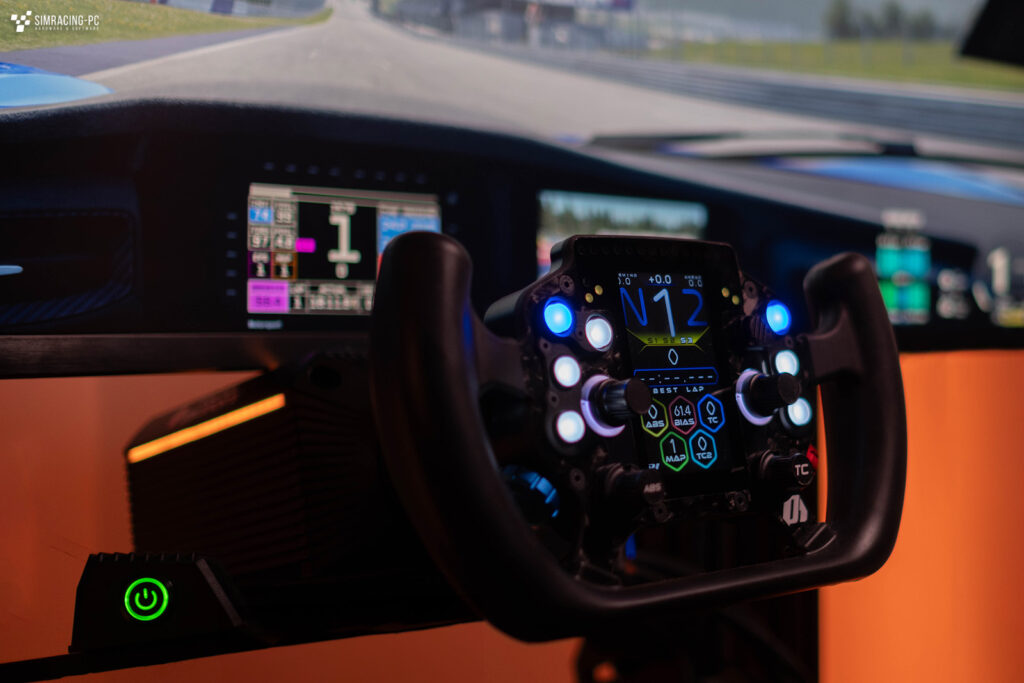P1 Arnage GT Sim Racing Wheel – Review
When it comes to steering wheels with an integrated screen, there is an endless range to choose from. However, the P1 Arnage GT Sim Racing Wheel stands out from the crowd and takes a different approach to the competition. How does the vertical screen perform in practice and what are the advantages or even disadvantages of the concept?
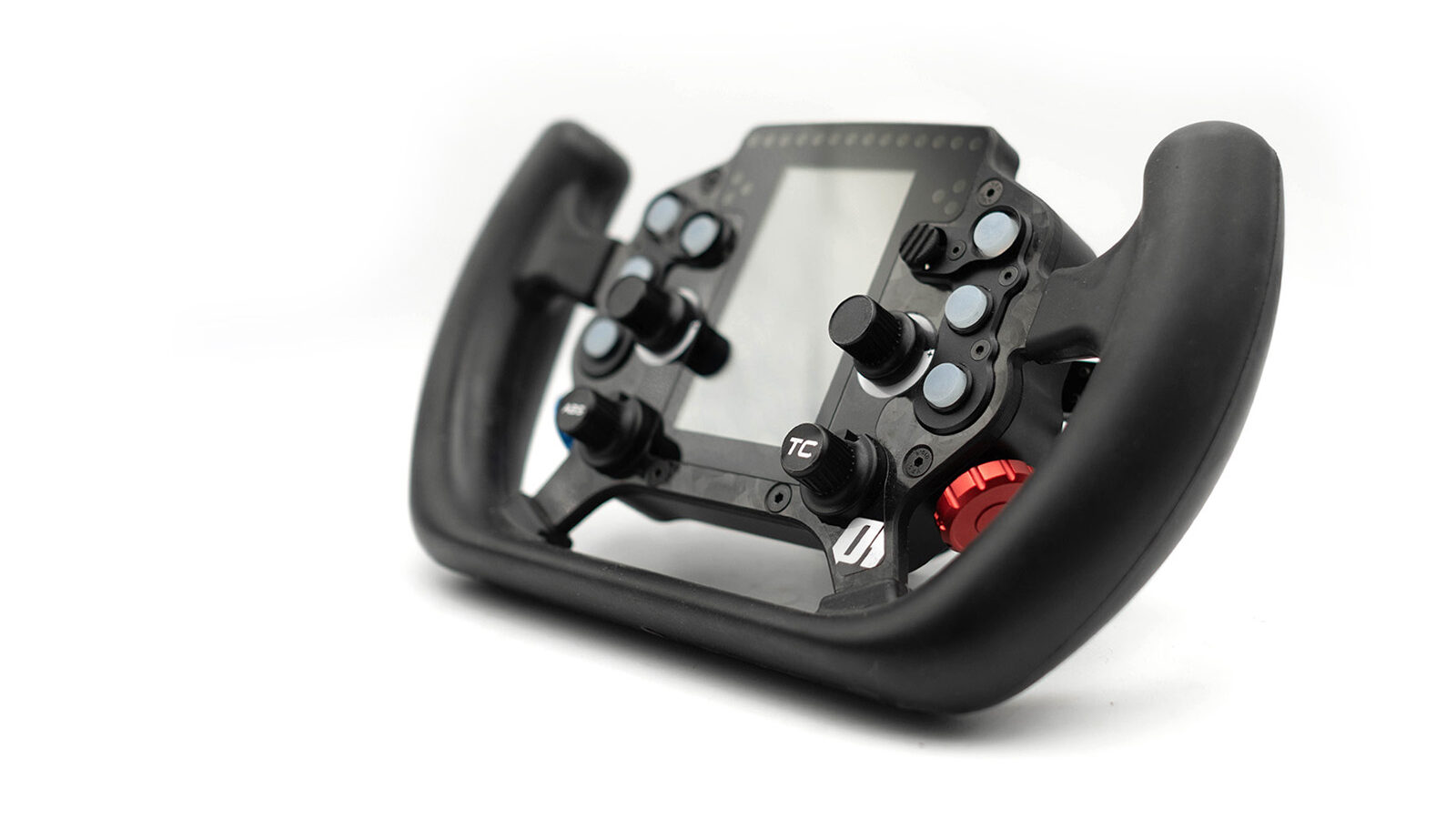
Ordering and shipping
When ordering the steering wheel, everything is still very traditional. It can be ordered directly from the French manufacturer P1 Sim at a price of €1,050 + shipping (the cost to Germany is very high at €49). The manufacturer currently states a delivery time of approx. 15 days.
Technical data
In terms of technical data, P1 Sim is relatively vague and only provides the following information:
- 4″ LCD Touchscreen
- 7 illuminated push buttons
- 2 rotary encoders
- 2 twelve position rotaries
- 2 Thumb rotaries
- 33mm ergonomic Rubber grips
- 20 RGB LEDs
- 2 magnetic shifter paddles
- 2 Switchless Clutch paddles
- Wheel diameter: 290 mm
- 5mm Carbon plate
- CNC machined Aluminium parts
- High Quality 2.5m long USB cable
- VR Compatible
- Hub compatible with any bases on the market.
Including the built-in hub, the steering wheel without quick release has a total weight of around 1300g.
Scope of delivery
The scope of delivery is practical. The steering wheel is well padded and packed in an inconspicuous cardboard box:
- Steering wheel including hub
- Sticker sheet
- USB cable
A printed manual is not included with the steering wheel, but a very detailed version can be downloaded directly from the P1 Sim website: Manual (Download)
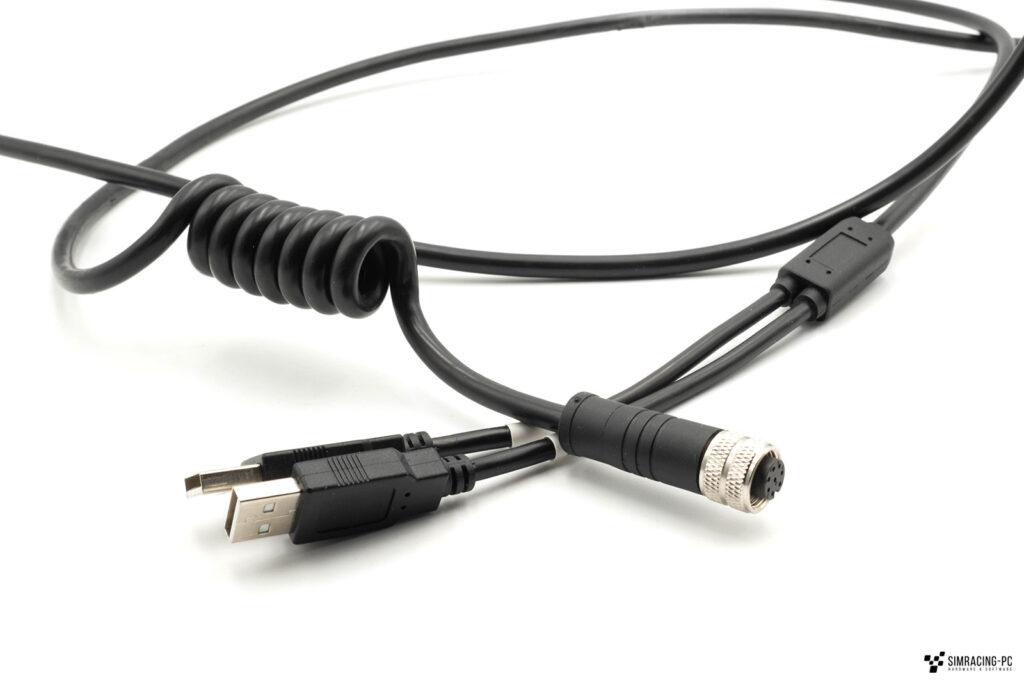
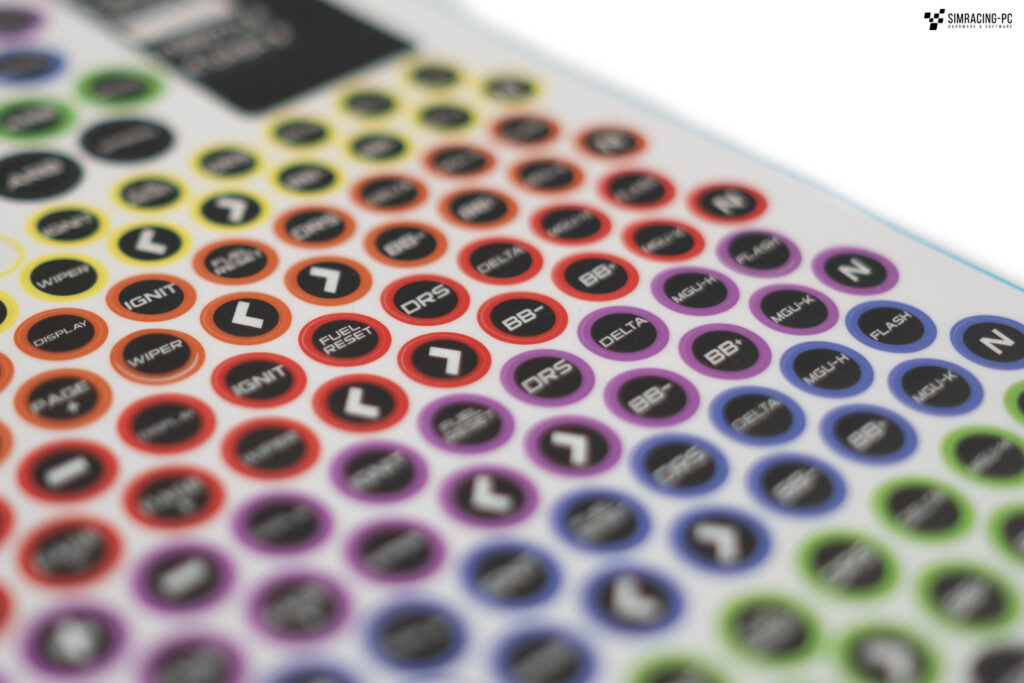
Features
The 29 centimetre P1 Arnage – GT Sim Racing Wheel is made almost entirely of aluminium and carbon. The milled aluminium housing and the five millimetre thick front plate made of forged carbon give the steering wheel a very high level of stability and a classy look at the same time.
Functions
The steering wheel has a variety of functions, which can be categorised as follows:
- 7 buttons: The buttons are each illuminated by a single LED (two blue and five white buttons), which leads to relatively uneven illumination without the stickers used. On the plus side, the rubber caps provide a very pleasant feel and a clearly defined pressure point with medium trigger force.
- 2 rotary switches: The two rotary switches on the bottom each have twelve fixed positions, which can be assigned as individual functions in the simulation. For example, the TC and ABS values always have fixed positions when assigned accordingly. The rotary switches are very easy to grip and the aluminium caps are very comfortable to hold.
- 2 thumb encoders: There are two thumb encoders with aluminium rotary knobs on the outside of the steering wheel. They are relatively easy to operate and are ideal for frequently changed parameters such as the brake balance.
- 2 rotary encoders: Two further normal encoders are located relatively in the centre, which are easier to move than the rotary switches.
- Joystick: There is a four-way joystick within reach of the right hand, which is ideal for operating menus and similar applications.
Even though we are now spoilt by the 7-way funkys on almost every new steering wheel, the joystick here rounds off the overall very good range of features of the steering wheel.
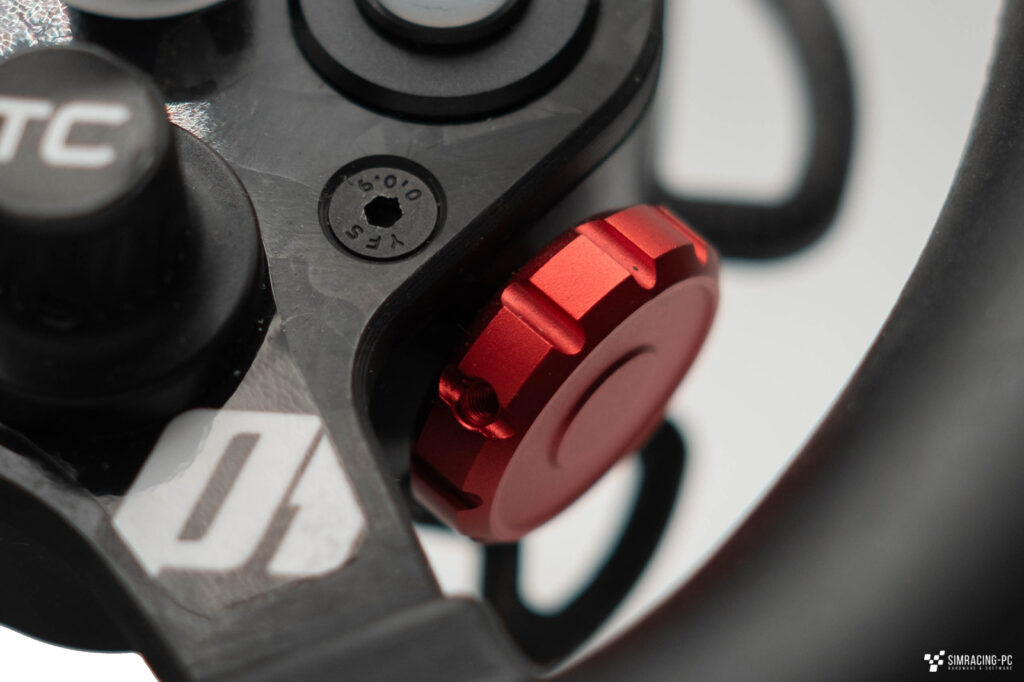
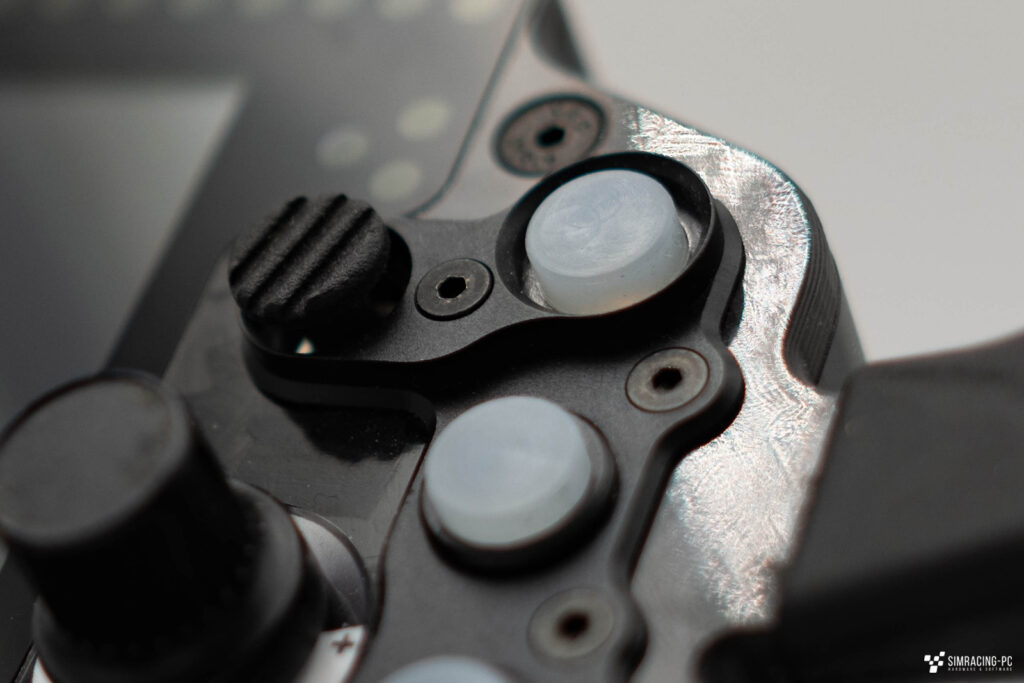
Display
The centrepiece of the steering wheel and the concept is the central, four-inch VoCore display. However, the special feature here is not the type of display, but rather the way it is mounted. This is because the vertical alignment means it is positioned higher than almost all other simracing wheels on the market. The concept also allows for completely new dashboard designs, in which the upper area in particular can be kept in view relatively well even without a reclined seating position.
Apart from that, the built-in VoCore, which is controlled via Simhub, does its usual good job. As it is also supplied with power via a corresponding USB port, connection interruptions due to voltage problems are not an issue, even when the brightness is set very high.
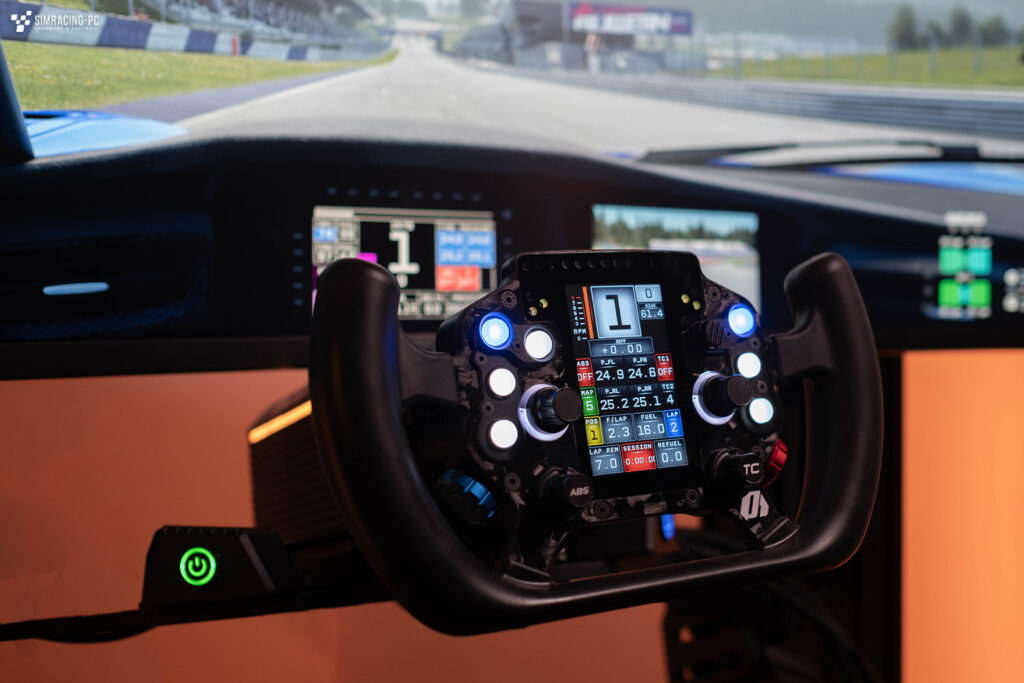
LEDs
There are a total of 20 RGB LEDs above and to the side of the display, which can be individually controlled via the Simhub. 14 of these function as an RPM display in the standard profile, while three LEDs on each side are used for flag symbols or similar. The LEDs are very elegantly framed in a cover that also encloses the display. The illumination of the surrounding buttons shines through the non-active LEDs very slightly, but this is not noticeable during operation and can only be recognised on closer inspection.
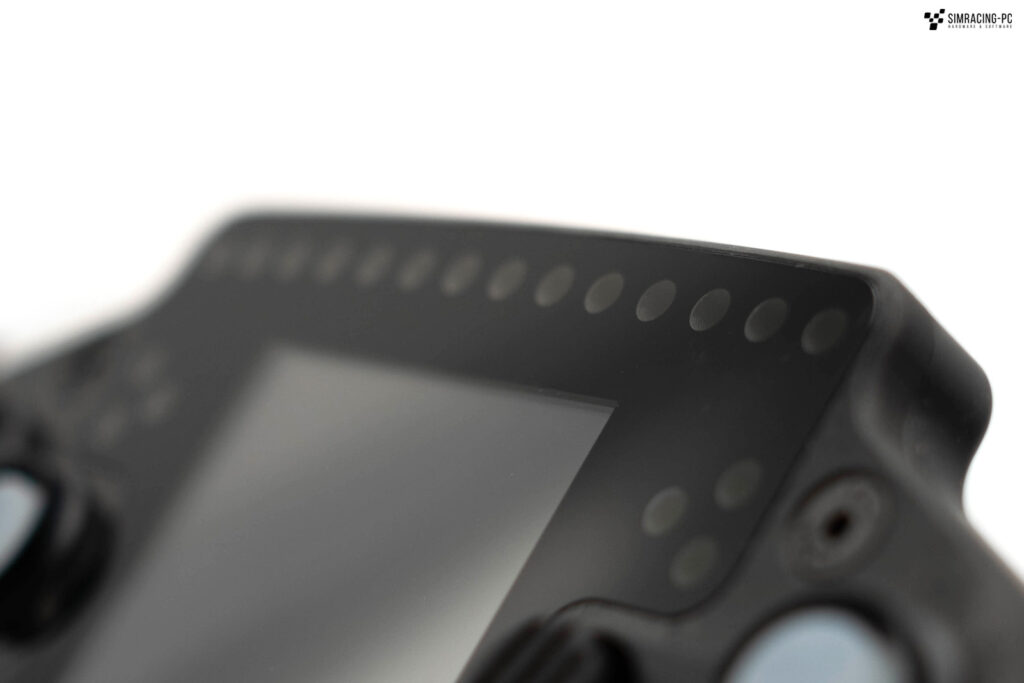
Shifter and dual clutch
There are two magnetic paddle shifters and a configurable dual clutch on the back of the steering wheel. Both components are each equipped with an aluminium housing and five-millimetre-thick carbon paddles. The latter can be adjusted laterally via slotted holes in a range of around one centimetre (see photos).
In order for the two shifters to work properly, they must be calibrated using the corresponding internal function of the wheel. The process is completed in a few seconds and no missed or faulty gear changes were detected during the entire test period. The paddle shifters are on the softer side in terms of actuation, but still have a clearly defined trigger point and can be categorised as quiet for magnetic paddle shifters. A slightly perceptible vertical play is barely noticeable during the shifting process itself, but is still very noticeable in comparison.
The two paddle shifters of the dual clutch are located below the two shifters. The operating force is very pleasant (slightly harder than the Podium Advanced Paddle Module from Fanatec, for example) and the paddles are easy to operate without having to take your hands off the steering wheel. The dual clutch paddles’ bite point can be calibrated in a similar way to the shift paddles and adjusted in 1 or 5 per cent increments. However, the feedback on the set value is somewhat unfortunate via the RPM LEDs, so that you often need more than one attempt to perfectly hit a value for the bite point for precise settings.
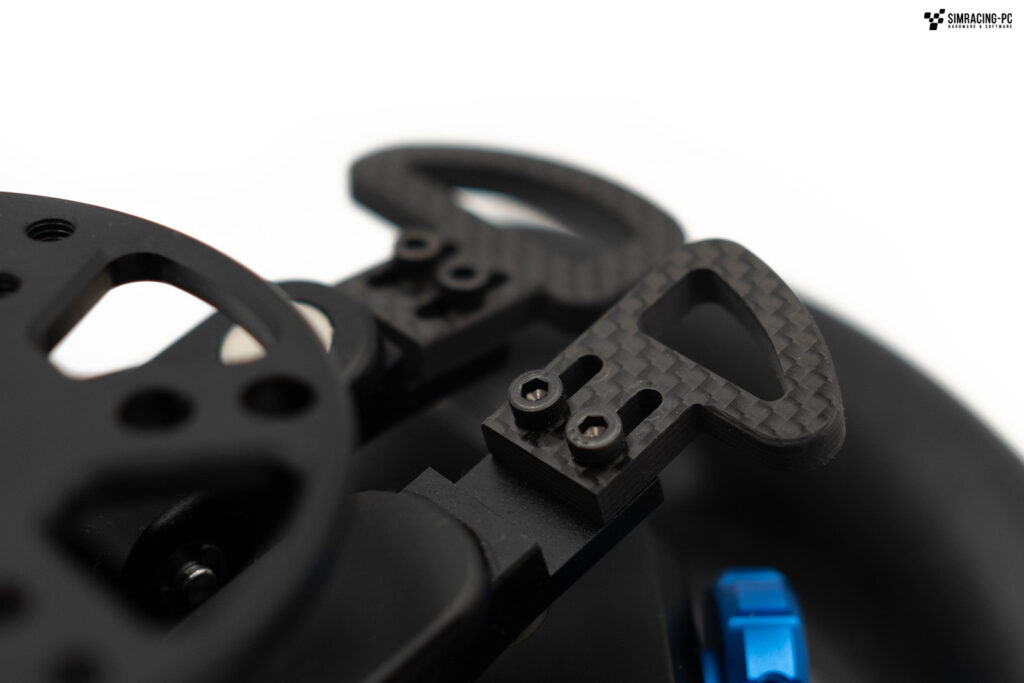
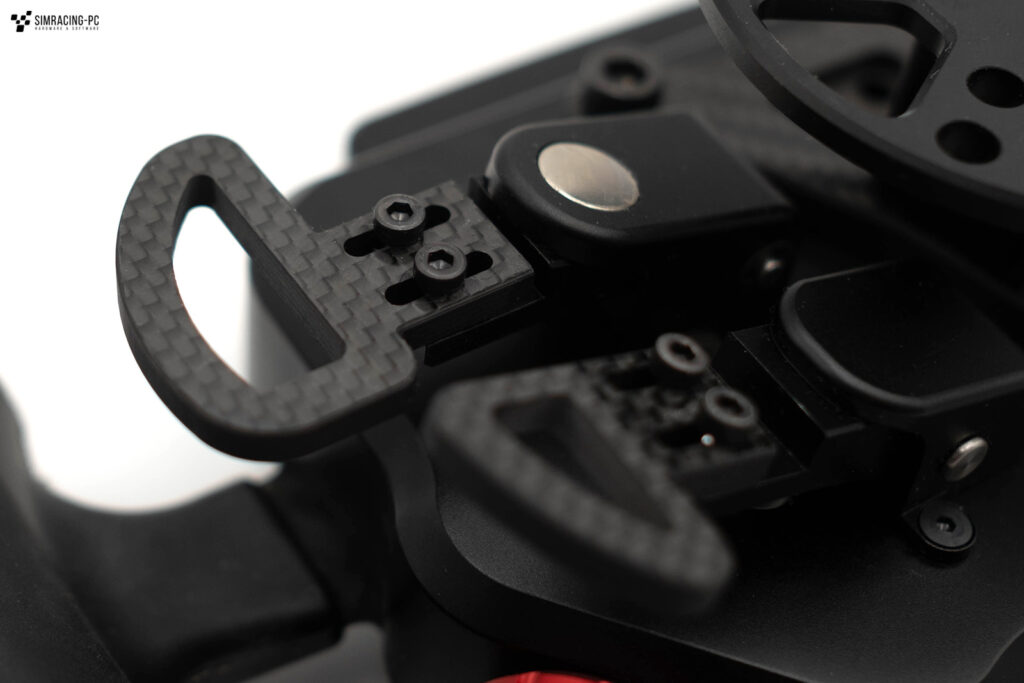
Hub
In order to be able to use the wheel as universally as possible, P1 Sim has attached a mounting bracket to the back of the wheel. This is equipped with the two standard bolt circles (50.8 and 70 millimetres), with three holes with and without thread per bolt circle. This enables bolting from the outside (e.g. QR from Asetek) or from the inside (Podium hub from Fanatec). This should ensure full compatibility with all currently available QR systems. With a thickness of approx. 7.5 centimetres measured up to the front plate, the steering wheel is also relatively thin, which leaves plenty of room for positioning on the rig.
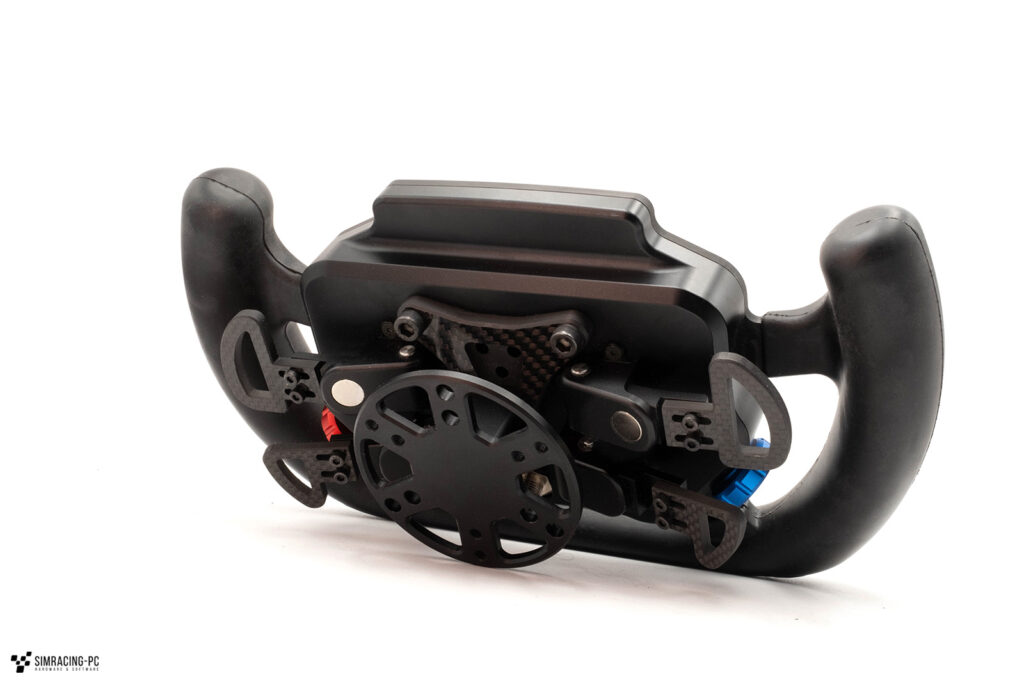
Grips
The verdict on the grips of the P1 Arnage – GT Sim Racing Wheel is mixed. On the one hand, the relatively soft and, at 33 millimetres, relatively thick rubber grips offer a very good grip when used with gloves. On the other hand, due to their relatively simple shape, they are not as ergonomic as the grips on the Artura Pro steering wheel from Ascher Racing, for example, which we tested some time ago. Especially without gloves and with relatively small hands, this can cause problems during longer sessions. Even if this aspect is very subjective, the grips are rather average in this respect.
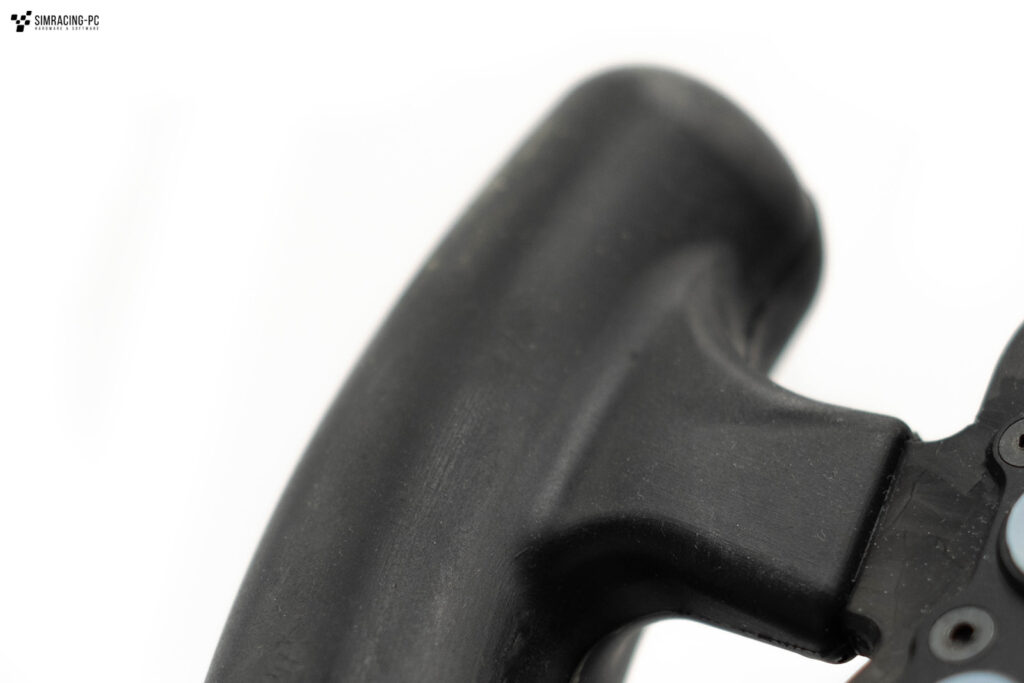
USB cable
The connection between the P1 Arnage and the computer is provided by a special USB cable that utilises two USB ports and combines them into a securely screwable connection on the steering wheel. One port is specifically for the screen, while the rest of the steering wheel is supplied with power and data via the second part of the cable. The cable is very generously dimensioned with a length of approx. 2.5 metres, but is also relatively stiff due to the double number of wires inside.
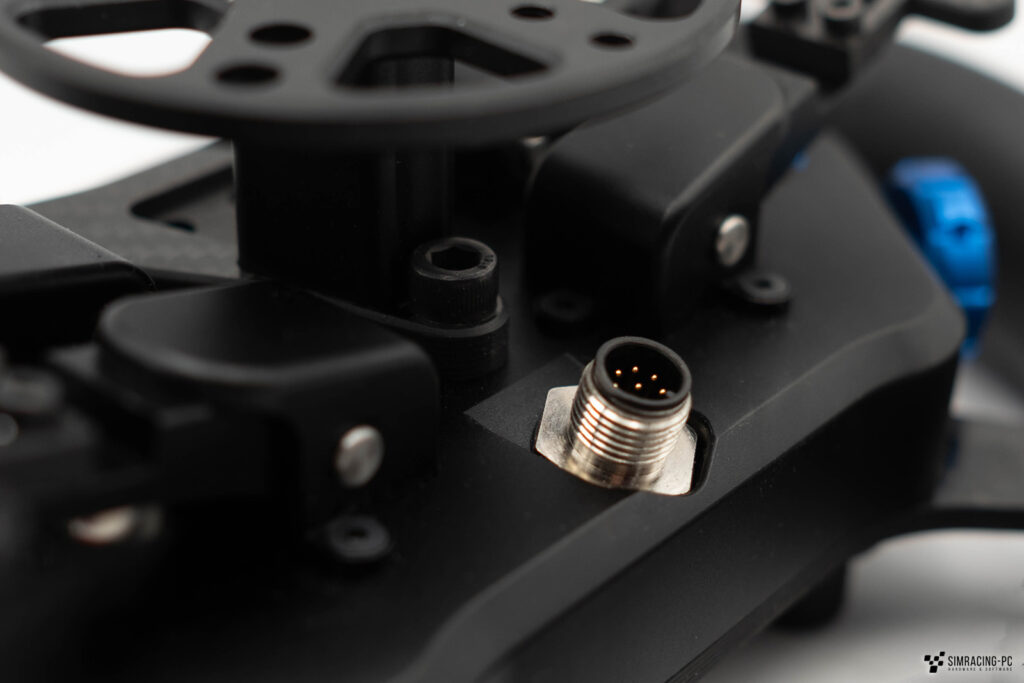
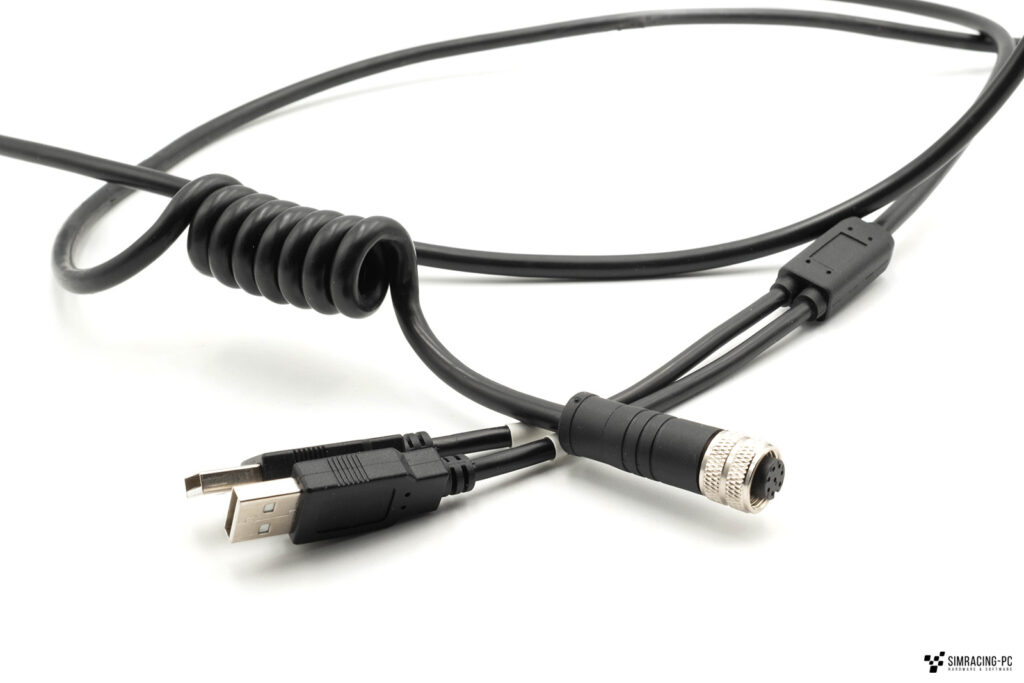
Stickers
P1 Sim contains a sticker sheet with various stickers that are intended for both the buttons and the rotary controls. Even though the stickers are available in different colours (yellow, orange, red, purple, blue, green, black), some possible assignments or neutral stickers are missing. The illuminated buttons in particular would also benefit greatly from matching button caps.

Software
Simhub
There is probably only one big question about steering wheels with controllable LEDs and an integrated display at the moment: Is Simhub supported? P1 Sim does everything right here and offers official support in what is currently the most popular simracing software. The steering wheel can be added as a separate device and is then recognised directly without any further configuration. The manufacturer also provides a pre-configured LED profile that can be loaded with just a few mouse clicks. In addition to the RPM LEDs, a spotter function as well as flag and speed limiter effects are also preset. However, there is no customisation option for the button LEDs.
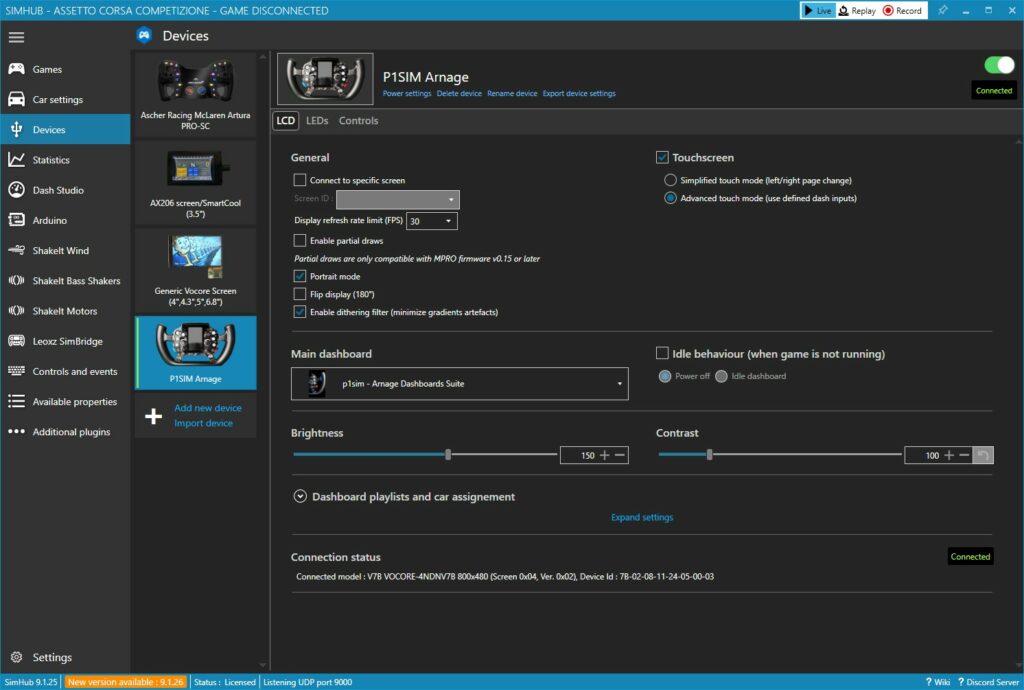
The 4-inch display is the main feature of the steering wheel and therefore a suitable dashboard (Simhub) is also important. However, this is where a problem arises. As almost all conventional steering wheels are equipped with horizontal displays, there is now a corresponding dashboard for almost every vehicle, usually available to download free of charge. However, the situation is different with the P1 Arnage, where you currently have to fall back on the two dashboards supplied by P1 Sim. Other designs are very difficult to find, so you would have to do it yourself. P1 Sim’s approach with its own dashboard suite is good, but there is definitely still a lack of content here. Just two different dashboards are not enough and the “widgets and tools” functions that have at least been hinted at have not yet been implemented. There is definitely still room for improvement here.
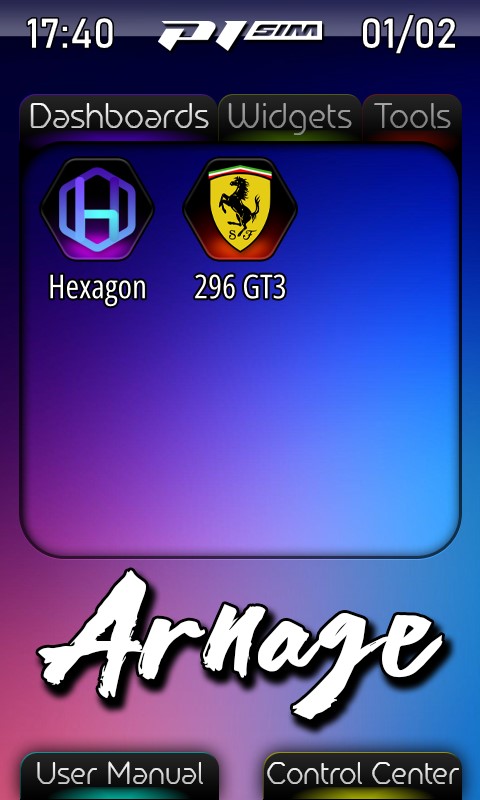
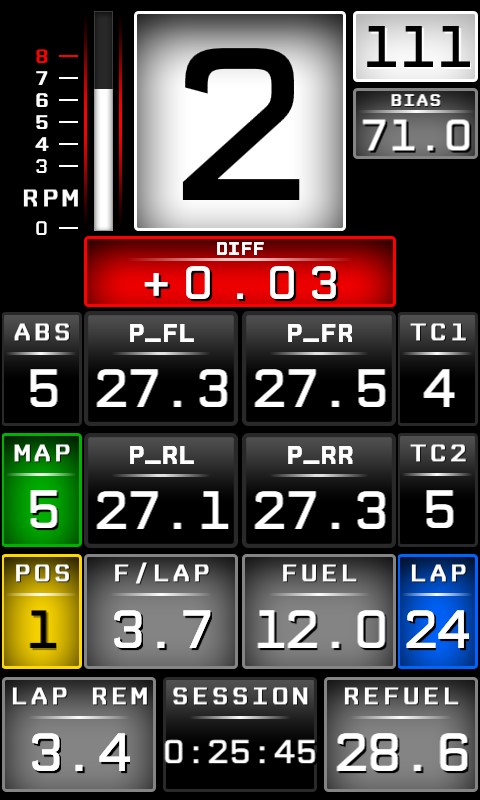
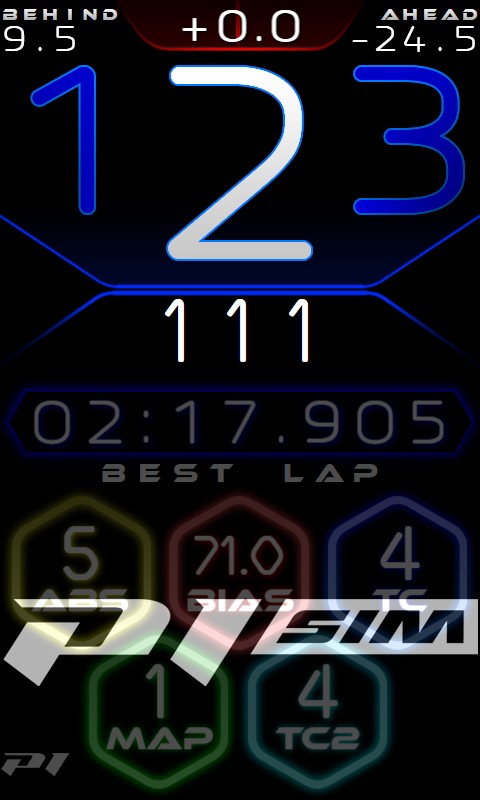
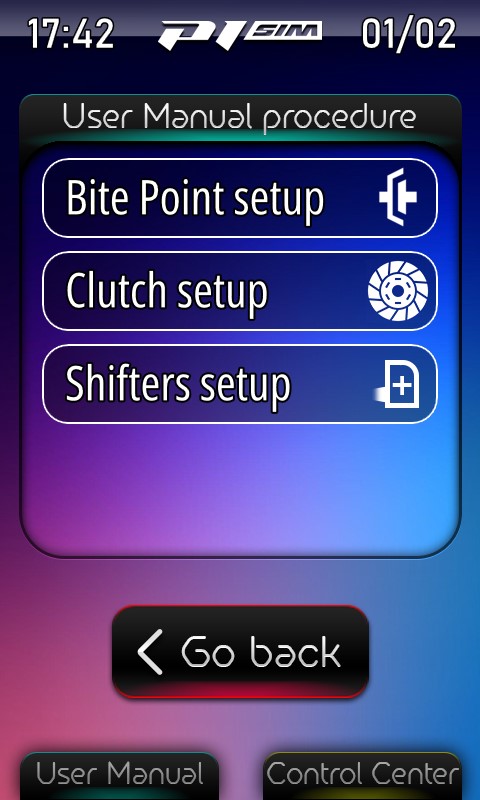

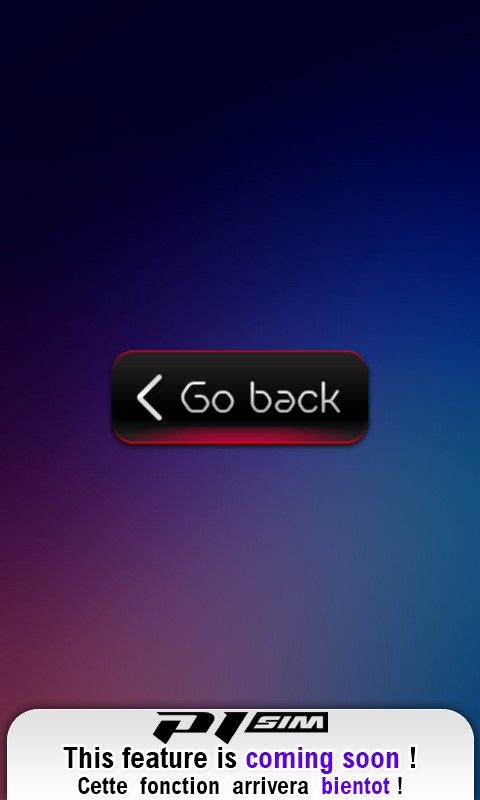
P1 Sim
The firmware of the steering wheel can be updated using P1 Sim’s own software. However, this software is not required for normal operation and therefore only needs to be opened if an upgrade is required.
Driving impression
The steering wheel is great fun. All the functions of the P1 Arnage are well thought out and the arrangement of the display is not only a welcome change, but also makes it easier to grasp the information while driving. Only the play of the two paddle shifters was a little annoying on the first few laps, but this quickly faded after a few minutes.
Conclusion
The P1 Arnage – GT Sim Racing Wheel is a real eye-catcher. The 29 centimetre steering wheel combines an innovative concept with high-quality materials (mainly carbon and aluminium), a wide range of functions and, of course, full Simhub compatibility. On the other hand, there are some weak points such as the immature software, the USB cable required for operation, the stickers supplied and the shifters with too much play. Even though the steering wheel will probably not be the main steering wheel for most Simracers due to its shape, it can certainly be a good choice as a second or third steering wheel.
Pros
- Vertical display
- Simhub-Compatibility
- Materials (aluminium / carbon)
- Dual clutch
- Features
- Hub (easy mounting)
Cons
- Stickers
- Incomplete software
- Shifter with too much play
- USB-Cable
- (Grips)
